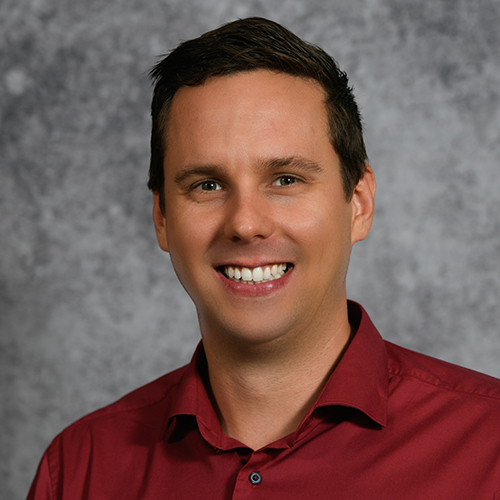
Dr. Florian Laggner
Assistant Professor of Nuclear Engineering
Department of Nuclear Engineering
North Carolina State University
Abstract
Recent community reports present a bold vision of bringing fusion energy to the grid as soon as possible and highlight gaps on the path to a fusion pilot plant. As a key step, a sustained burning plasma, which is dominantly self-heated by fusion reactions, needs to be demonstrated. Research in the FPAC lab at NC State Nuclear Engineering targets to advance the scientific and technological basis in multiple directions towards the goal of a sustained burning plasma.
The core-edge integration challenge targets the combination of a high performance fusion core with a dissipative boundary plasma. A promising avenue is the injection of solid low-Z impurity powders like boron and boron-nitride. These injections increase radiative cooling, can suppress transient events and improve wall conditions by a reduction of recycling as well as a reduction of high-Z impurities from the first wall that can contaminate the core. Our goal is to develop a control scheme that optimizes the amount of injected impurities to protect the plasma facing components while sustaining high plasma performance.
To sustain a burning plasma, magnetic confinement fusion concepts rely on highly efficient heating and current drive systems. Neutral beam injectors are very versatile and widely used. This plasma heating method crucially relies on high power density ion sources that can produce on the order 1.5 kA/m^2 of extracted ion current. Recent advances in solid state radio-frequency generator technology enable the optimization of inductively coupled ion sources towards higher efficiency and operational reliability. Our goal is to develop a series of intermediate scale ion sources that inform the design of an optimized full scale prototype ion source for neutral beam injectors at the DIII-D National Fusion Facility.
In summary, FPAC lab aims to establish multiple research directions from advancing the science of burning plasmas to engineering fusion technology.
Biography
Dr. Florian M. Laggner is an expert on magnetically-confined fusion plasmas with interest in the plasma boundary layer of tokamaks. His research focuses on the H-mode pedestal with a particular emphasis on the pedestal profile structure, its stability and the ionization source from neutral particles. Since 2022, Dr. Florian Laggner has been an Assistant Professor in the Department of Nuclear Engineering at NC State and leads the FPAC LAB, which develops and characterizes technological solutions for auxiliary systems e.g. plasma diagnostics or heating systems that face the harsh environment of a fusion reactor. Dr. Laggner serves as Deputy leader of the DIII-D Pedestal & QH-mode research area and the 2023 APS Division of Plasma Physics program committee. He has been an advisor and a mentor for numerous students at undergraduate and graduate level, guiding research projects and training the next generation of scientists and engineers.
Thursday, January 12. 2023
4:00 pm seminar
Hybrid Option (Speaker is in person)
zoom (link upon request)
or
Room 1202 Burlington Labs


